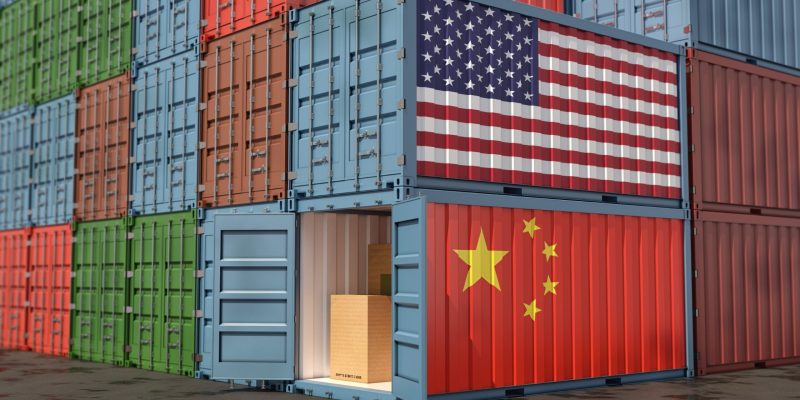
US President-elect Donald Trump’s fondness for tariffs may lead to American consumers bearing the brunt of high costs once again.
Trump’s victory in the 2024 US presidential election has made it clear that the Republican is likely to increase tariffs on all imported goods to the country.
Trump has already promised sweeping tariffs to bolster the US economy, protect American industries, promote manufacturing, and reduce reliance on foreign shipments.
The President-elect has also said that he intended to implement 60% tariffs on Chinese goods and 10-20% on products from other countries.
He argued that this is expected to create more factory jobs, shrink the federal deficit, and lower prices for American-made products by making foreign goods more expensive.
However, tariffs imposed during the first Trump term – and continued and extended under Biden – did not achieve all of the promised outcomes.
“Furthermore, our research shows that if the new tariffs are fully passed on, they could increase inflation and cost American consumers up to $2,400 per capita annually,” ING Group’s analysts said.
This potential increase in consumer costs and inflation could have widespread economic implications, particularly in an economy where consumer spending accounts for 70% of all activity.
Washing machine prices soared under Trump’s policies
In February 2018, a 20% tariff was imposed on all imported large residential washing machines.
According to the Consumer Price Inflation report, there was no immediate impact for the first four months as retailers sold off their existing inventory that wasn’t subject to the tariff.
However, consumer prices increased by 12% in the following months, according to ING Group.
“Since US manufacturers produce washing machines that are not subject to these tariffs, it appears that consumers bore more than 60% of the tariff cost on foreign-made appliances,” according to ING.
“The remaining costs were absorbed by retailers’ profit margins or through price reductions by foreign producers,” the analysts said.
Over time, prices gradually decreased again as consumers began substituting domestically made washing machines and foreign manufacturers likely agreed to further price cuts.
Tariffs on Chinese goods boosted US customs revenue but led to higher prices
The trade war between the US and China under Trump’s previous presidency led to both sides imposing additional tariffs on hundreds of billions of dollars worth of goods.
The Tax Foundation recently estimated that the Trump-Biden tariffs that we have seen so far – as President Biden kept most of the Trump administration’s tariffs in place – are equal to an average annual tax increase on US households of $200 to $300 per year based on actual revenue collections data.
Customs duties revenues have risen sharply since the implementation of additional tariffs.
This significant rise in revenue is largely due to the tariffs imposed on Chinese goods, which boosted customs duties by around 0.2% of GDP from 2020 through 2022, according to the Congressional Budget Office.
Analysts at ING Group said despite a rise in customs revenues, this revenue is actually paid for by the importing country or the consumer.
This means a lower profit margin for the importing country and higher prices for the consumers.
The analysts said:
Although customs duties contribute to the federal budget and are thus transferred back to households via public services or infrastructure developments, they do work as a tax, increase consumer prices overall and can lead to higher inequality and less consumer choice.
The White House, however, pointed out recently that even with Trump’s new tariff proposals, it is mathematically unlikely that these would replace revenue raised by other sources.
“Shifts in consumer behavior are indeed one of the reasons why increasing tariffs cannot become a primary source of government revenue,” the analysts added.
Tariffs act as taxes on consumers
With increased tariffs on imported goods imminent when Trump takes office at the White House again, disposable income may shrink.
Last year, the US imported goods worth $3.1 trillion, with $427 billion coming from China.
“Applying a 60% tariff on these Chinese imports, and a 10-20% tariff rate on the rest of the world, would mean custom duty revenues in the range of $523bn to $790bn – assuming no change in consumer behavior,” ING analysts said.
The disposable personal income in the US in 2023 was $20.547 trillion, which would mean the proposed tariff increase could represent 2.5%-3.9% of the income if fully passed on to the consumers, according to ING Group.
The agency’s calculations showed that this would represent $1,500-$2,400 per capita income.
“This is significant in an economy where consumer spending accounts for 70% of all activity,” ING Group said.
The analysts noted:
The increase in the cost of goods, coupled with potential supply-side constraints in the labour market as a result of Trump’s proposed immigration policies, could also lead to a one percentage point increase in inflation, in our view.
The post How will Trump’s proposed tariffs burden US consumers? appeared first on Invezz









